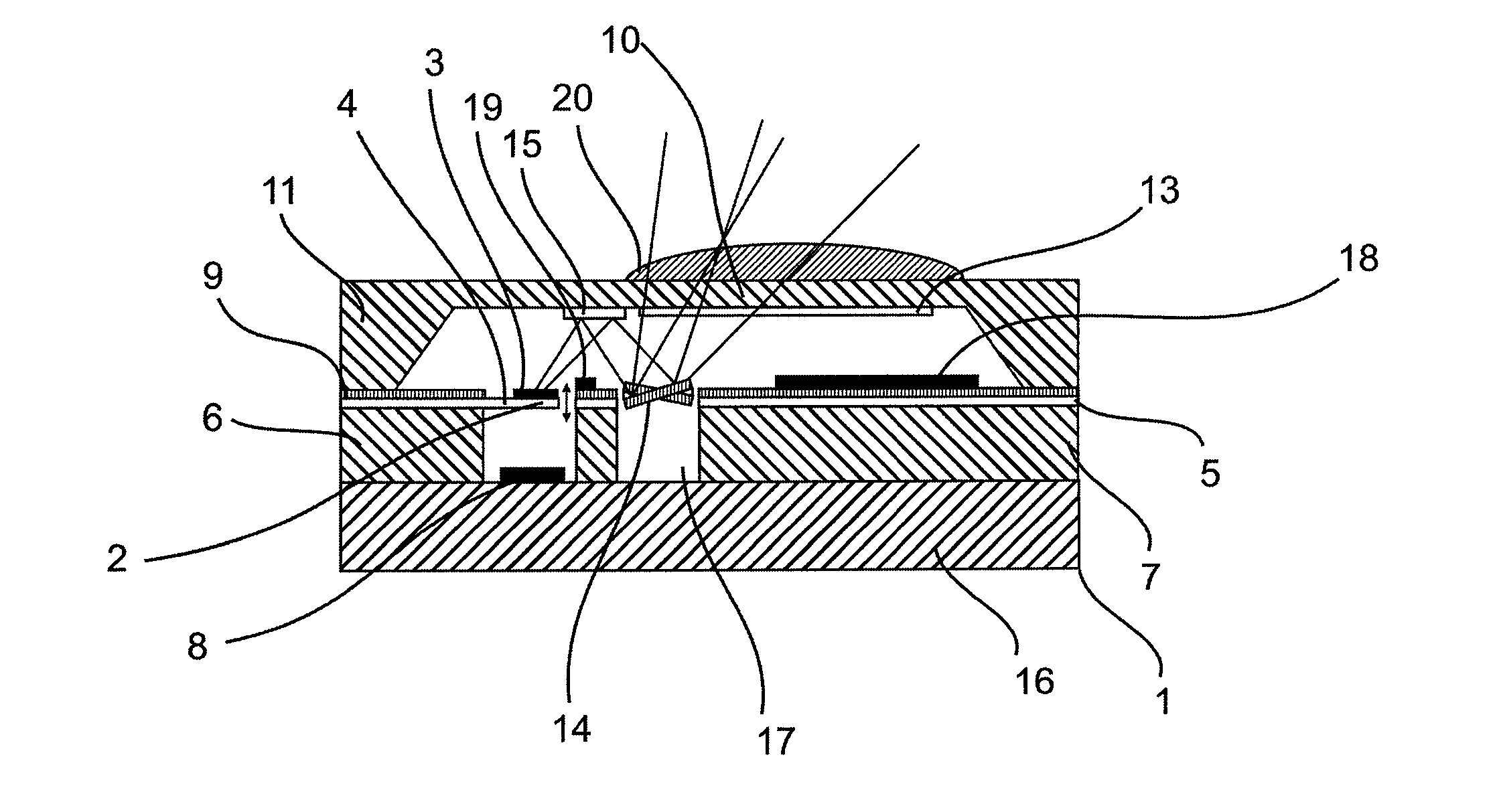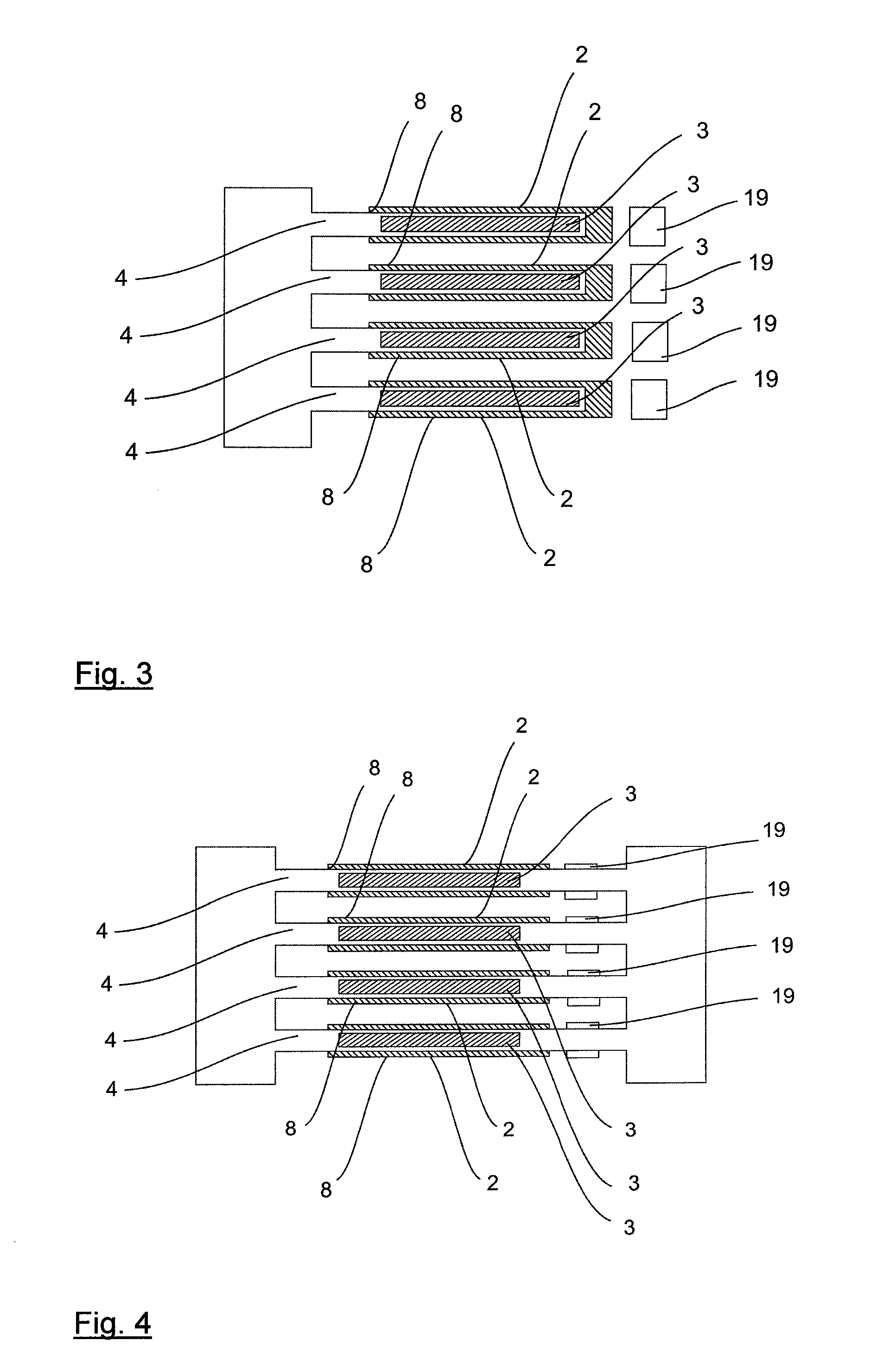Radiation imaging sensor
a technology of imaging sensor and infrared sensor, which is applied in the field of radiation imaging sensor, can solve the problems of large space occupation, high cost, and sometimes relatively slow imaging process, and achieve the effects of faster imaging process, compact construction, and high spatial resolution
- Summary
- Abstract
- Description
- Claims
- Application Information
AI Technical Summary
Benefits of technology
Problems solved by technology
Method used
Image
Examples
Embodiment Construction
[0007]The object is achieved with the radiation imaging sensor in accordance with claim 1. Advantageous configurations of the radiation sensor are the subject matter of the dependent claims or can be inferred from the following description together with the exemplary embodiments.
[0008]The proposed radiation imaging sensor comprises at least one detection element which is implemented on a substrate as a micromechanical resonator and absorbs the radiation to be detected, at least one excitation device, with which the detection element can be set into resonant oscillation, and at least one detection device with which a shift in the resonance frequency of the detection element under exposure to radiation can be detected. The proposed radiation sensor is characterized by the fact that it comprises a scanning device with a single-axis or multi-axis tiltable scanning element. The ability to tilt the device means that the detection element can be used to detect radiation from different dire...
PUM
 Login to View More
Login to View More Abstract
Description
Claims
Application Information
 Login to View More
Login to View More - R&D
- Intellectual Property
- Life Sciences
- Materials
- Tech Scout
- Unparalleled Data Quality
- Higher Quality Content
- 60% Fewer Hallucinations
Browse by: Latest US Patents, China's latest patents, Technical Efficacy Thesaurus, Application Domain, Technology Topic, Popular Technical Reports.
© 2025 PatSnap. All rights reserved.Legal|Privacy policy|Modern Slavery Act Transparency Statement|Sitemap|About US| Contact US: help@patsnap.com



